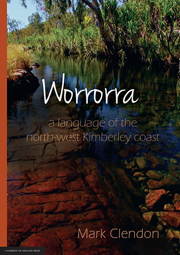Book contents
- Frontmatter
- Dedication
- Contents
- List of tables
- List of figures
- Abbreviations
- Acknowledgements
- Chapter One introduction
- Chapter Two segmental phonology
- Chapter Three morphophonology
- Chapter Four nouns and noun classes
- Chapter Five indicative mood and basic verbal morphology
- Chapter Six adjectives and inalienable nouns
- Chapter Seven pronouns, demonstratives, anaphors, deictics
- Chapter Eight optative, counterfactual and exercitive moods
- Chapter Nine number
- Chapter Ten adverbs and postpositional phrases
- Chapter Eleven complex predicates
- Chapter Twelve experiencer constructions
- Chapter Thirteen objects and possession
- Chapter Fourteen complement clauses
- Chapter Fifteen subjunctive verbs
- Chapter Sixteen middle voice
- Chapter Seventeen discourse cohesion
- Chapter Eighteen kinship terms
- Appendices
- References
Chapter Two - segmental phonology
Published online by Cambridge University Press: 05 October 2014
- Frontmatter
- Dedication
- Contents
- List of tables
- List of figures
- Abbreviations
- Acknowledgements
- Chapter One introduction
- Chapter Two segmental phonology
- Chapter Three morphophonology
- Chapter Four nouns and noun classes
- Chapter Five indicative mood and basic verbal morphology
- Chapter Six adjectives and inalienable nouns
- Chapter Seven pronouns, demonstratives, anaphors, deictics
- Chapter Eight optative, counterfactual and exercitive moods
- Chapter Nine number
- Chapter Ten adverbs and postpositional phrases
- Chapter Eleven complex predicates
- Chapter Twelve experiencer constructions
- Chapter Thirteen objects and possession
- Chapter Fourteen complement clauses
- Chapter Fifteen subjunctive verbs
- Chapter Sixteen middle voice
- Chapter Seventeen discourse cohesion
- Chapter Eighteen kinship terms
- Appendices
- References
Summary
Worrorra phonology will be discussed here in fairly concrete terms in line with classical phonemic analysis, the function of which is to arrive at a clear statement of native speakers' articulatory goals. Phonetic representations will be enclosed in square brackets ([x]), while phonemic representations will be enclosed in diagonal lines (/x/) or italicized. Representations of morphophonemes and morphological forms are enclosed within vertical lines (|x|).
The evidence for the articulatory data presented here is impressionistic, formed during extended fieldwork at Mowanjum and during many hours of listening to recorded speech. Although no spectrographic images of speech segments will be presented, the claims made here are able to be tested by reference to my original recordings, which are all archived with the Australian Institute of Aboriginal Studies.
Phonological features
Worrorra phonemes may be described in terms of the set of features displayed in Table 2.1. All phonemes in this table are listed by their ‘elsewhere’ forms in IPA (phonetic) script, and also in the orthography in which Worrorra materials have been published by the Kimberley Language Centre.
To a certain extent decisions about the feature system can be read from the morphophonemic rules that drive the grammar, as outlined in Chapter Three. These rules provide an empirical basis for feature selection, in that they define classes of sounds to which the morphology is sensitive.
- Type
- Chapter
- Information
- WorrorraALanguage of the North-West Kimberley Coast, pp. 21 - 47Publisher: The University of Adelaide PressPrint publication year: 2014

